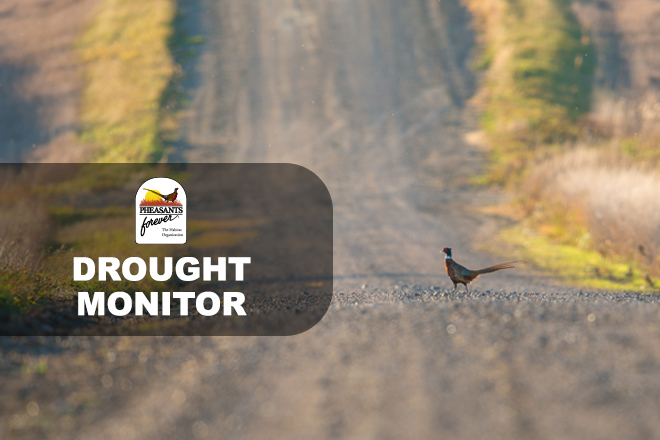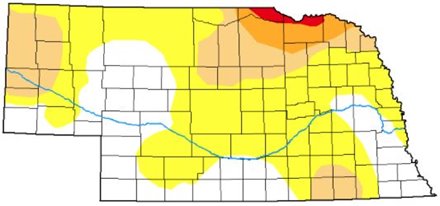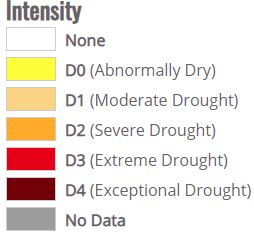
Conditions on the dry side in much of Nebraska don’t seem to be hurting upland birds yet
By Marisa Jensen
Nebraska sits sandwiched between South Dakota to the north, where drought is a growing problem for farmers as well as upland habitat and related insect production for pheasant chicks, and Kansas to the south, where moisture seems to have been arriving in ample supply to keep farmers and ranchers out of trouble … and pheasants happy.
A look at Nebraska’s drought monitor map reveals a state with some concerns on the moisture front, but no deep problems yet. In fact, some of the state, including the bird-rich southwestern corner, have no real moisture shortage.


In all, weather conditions in Nebraska currently point toward a decent fall for upland hunters. “The light winter should have kept hens in good shape going into this year,” shares Colby Kerber, PF and QF Hunting heritage program manager based out of Merna, Nebraska. “On top of that, spring nesting conditions were favorable, and timely rains in early July provided quality habitat and insects for broods in most areas in the state.”
Todd Filipi, resource conservation coordinator with the North Platte Natural Resources District, provides an outlook from the panhandle. “Vegetation-wise, things aren’t looking too bad. Pheasants had a pretty good spring without late moisture to ruin nesting. Most of the panhandle is at D0 or D1 drought level.”
Filipi also notes that early successional forbs are doing well and that plants have decent height to provide necessary cover for pheasants.
“Only a few counties in the extreme northeast areas, primarily Boyd County, but also northern Holt, Knox, and Cedar Counties, have experienced prolonged drought conditions,” shares John Laux, upland habitat and access program manager for Nebraska Game and Parks Commission. “Outside of that, the remainder of the state is in pretty good shape overall.”
Still, there are factors to keep an eye on and one is this: Emergency haying and grazing practices may go into effect soon in some counties if dry weather continues, so scout or call ahead to check on the status of habitats where you like hunt, especially if the lands are in CRP or other conservation programs.
Bottom line? Many places are faring worse than Nebraska for drought conditions. We should have had a good hatch after a mild winter, and the birds seem to be doing what they do best: Hanging tough. If conditions remain stable and timely rains continue, Nebraska could be a destination to look toward this upland season.
Nebraskan Marissa Jensen is Education & Outreach Program Manager for Pheasants Forever and Quail Forever.